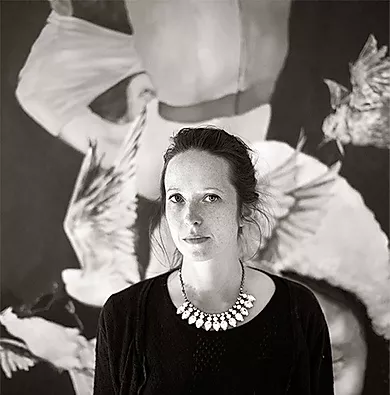Danielle Scott
Sy Battle

Erik Formoe
At the first encounter, Formoe´s paintings seem obvious, innocent and public. Erik Formoe is a riddle teller. Each image may be thousand pictures. Each question he poses can lead to thousand responses, or a thousand new questions.
People in Erik Formoe’s images are silent storytellers. They are anonymous figures who might meet, or maybe not. Apparently they are introverted melancholics.They know something. You can take part in their secrets, if you are curious enough. Memories are eternal, even if they are created only once. Erik Formoe’s paintings
dwell on this subject.

Olav Mathisen
Olav Mathisen (1990) is a young artist from Lillehammer, Norway. Mathisen has studied Fine Art at Ålesund Kunstfagskole, Strykjernet Kunstskole and is currently studying at Bergen academy of art and design.
He primarily works with oil and egg tempera on canvas. His subjectmather draws from fragments of the human condition; tendenses, roles, both subjectification and objectification of "the self" in different constructed situations.
His paintings consits of a variety of techniques. From total abstraction and thick pastose strokes, to more detailed figurative painting conversing on the same surface.

Christina Disington
Christina Disington (1980) is a self-taught artist whose creative production revolves around the figure, the duality in the human mind and human relations.
She uses her own photos as inspiration, often self portraits and pictures of family and close friends.
The main key of the paintings is disturbing and gloomy, almost morbid. In this universe children look like adults and adults look like children. The figurative and trivial in the motives are often disturbed and broken down by the surreal.
Add Mail here

Joelle Perry
Joelle Perry is a representational artist, who studied art under the atelier tradition of Charles H. Cecil Studios in Florence, Italy. She now aims in her career to become a contemporary sacred artist, her passion being Christian theology and prayer. Although she holds representational art as the truest or most beautiful form of art, she also uses other styles. These, she recognizes, can have the ability to convey deeper messages and ask deeper questions than representational art.
Add Mail here

Jan Davidoff
Jan Davidoff was born 1976 in Norden / Germany and reached his diploma in painting with Prof. Günther Förg at the Akademie der Bildenden Künste, München in 2009. He lives and works in Munich / Germany.
It would be too easy to follow one’s first impression and dismiss Jan Davidoff’s paintings as “figurative art”. In fact, his works are to be positioned on a level between concreteness and abstraction, on which real life scenes are confronted with a deeper meaning. Therefore photographs of travel experiences are being adapted on the computer back at the studio and then reduced to silhouettes, exaggerated and layered in various pictorial planes to set them into re-evaluating and significant contexts.
For example, the crowd paintings are inspired by Davidoff’s experiences in the tourist strongholds all over the world. But at the same time the indifferent background detaches the masses from their object relations and implements a second level of meaning. It is not about a real scene in front of a mighty cathedral or at a strongly frequented fair, it is more about the crowd itself and the role of the individual in its middle. The often used golden background intensifies this detachedness from content by evoking an association with the early Medieval religious icons, in which saints – enraptured from the material world – are painted in front of a golden background. Hence the viewer is confronted with the question about the relation between the individual and the almost overpowering mass. In Davidoff’s paintings the one or other person stands out, because of extraordinary clothing or a specially exposed position. But on the whole the individual person gets lost and only the dominating human crowd remains to be seen, analogical to a beehive. That conjures up a feeling of being lost, but at the same time the will to self-assertion. This way Jan Davidoff manages to communicate one of the most fundamental desires of today’s society, the perception as a unique individual, in his at first so easily as solely “figurative” classified paintings. Soon it is evident, that Davidoff’s works aren’t mere travel impressions, but an evaluation of the constellations of today’s society.

Gabriel Schmitz
Gabriel Schmitz (*1970, Dortmund, Germany) took up his studies of painting in Edinburgh, Scotland, in 1990 and then proceeded to do a Master in European Fine Art in Barcelona where he has lived and worked since 1994.
Since then he has exhibited on a regular basis in Barcelona, Madrid, Paris, London, Oslo and the United States.
His work shows a profound interest in the human being, either doing portraits or painting figures in loosely defined settings, urban surroundings or interiors, often with a desolate air to it. Cultural icons such as writers, artists or dancers serve as references in other works. His style is often sparse and sketchy, but his figures achieve a strong presence facing the spectator.
Parallel to his painting he has never abandoned the practise of drawing, mostly charcoal on paper, and he also embarks on projects that create new contexts for his work, as for example in his recent series “Walking with Alÿs”, in which he took photographs of two charcoal-drawn figures on the streets of New Jersey and New York.
info@mysite.com
◄
1/6
►
